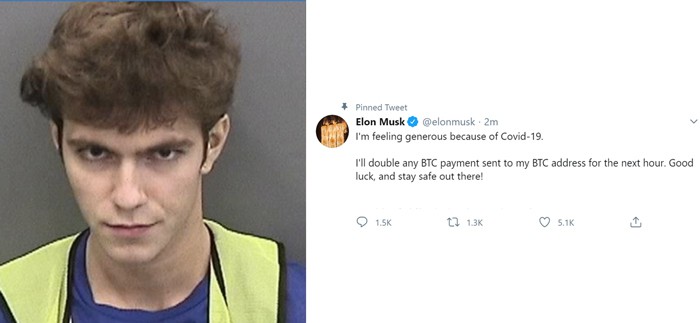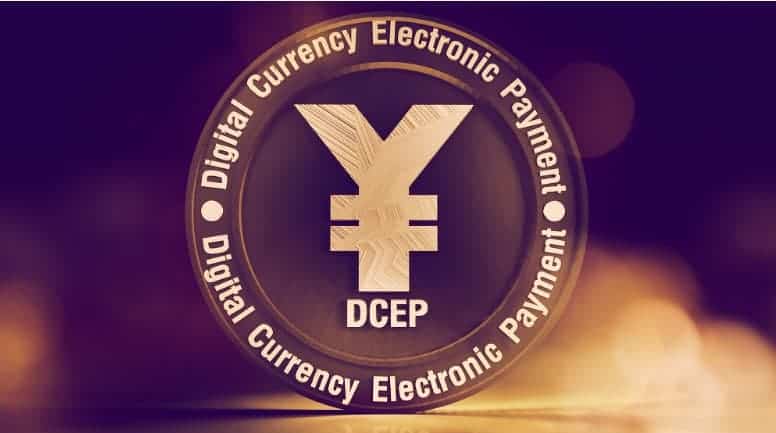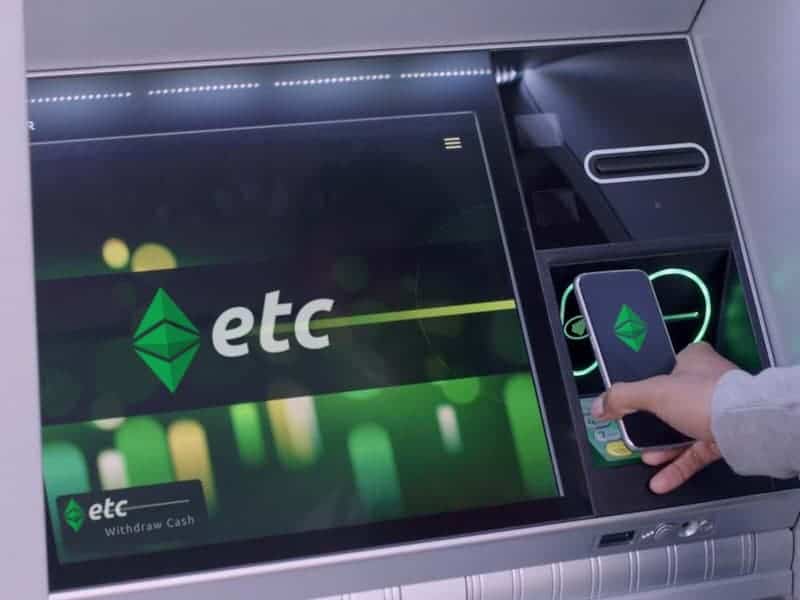In this issue
- Meet Graham Clark, teen who allegedly broke Twitter
- Ethereum Classic hit by two 51% attacks
- Bitcoin rises as U.S. takes aim at Hong Kong leaders and Tencent
- In China: CBDC now in large-scale testing; Huobi launches DeFi Labs
- Funding spotlight: Indonesia and Singapore
From the Editor’s Desk
Dear Reader,
Things are heating up in the technology space — politically. It’s what we’ve been tracking since last year, and now it is bleeding into how technology may shape our futures… specifically, access and adoption, if politics has anything to do with it. The question is, who is caught in the middle?
Access has always been a source of control in China. The Great Firewall exists and few American companies have breached it. The average Chinese citizen (without a VPN, and even then, these are harder to come by these days) can’t access or participate in the global shared digital experiences happening on Facebook, Google and Twitter. The digital divide is now politically driven, and the chasms are deepening. This is only going to intensify as the U.S. bans TikTok and WeChat to varying degrees. India has already shuttered TikTok and dozens of other Chinese apps, citing data security. The extrication of these shared technologies, however, shows how indelibly we are connected, how tied we truly are. Behind the obvious applications lie business relationships, co-investments, and shared interests. It’s going to be hard to separate these alliances forged during a more welcoming time. The state is widening its authority and limiting access. The question is, where is this all heading to?
Innovation no doubt is an economic driver. This year, however, it appears to have become a dangerous proxy of a race for supremacy. We are all caught in the middle of it. The way it was is essentially no more. Where we are now heading is based on the momentum of a fight with no way to let off steam, and the physics and the psychology of a future outcome may be hard to control.
There is a third option though. It’s one that innovation can create, and it is creating at this very moment — in the decentralized, globally cooperative and coordinated space of common goals — blockchain projects with teams around the world sharing the same vision. I choose that one. It’s one we track every day at Forkast.News.
These are interesting times. It is a blessing and a curse. But there is also a middle ground here as well. I remain cautiously optimistic that we will find our way together … no matter where we live in the world. Middle ground covers a lot of real estate, and for that reason, it is equally a powerful place to be.
Until the next time,
Angie Lau,
Founder and Editor-in-Chief
1. Graham Clark, teen accused of breaking Twitter, pleads not guilty

By the numbers: Graham Clark — over 5,000% increase in Google search volume.
The 17-year-old Florida teenager who is accused of orchestrating last month’s notorious Twitter hack that hijacked the accounts of famous people like Elon Musk to push a bitcoin scam, has pleaded not guilty to 30 felony charges. Graham Clark’s bail is currently set to $725,000, and he faces up to 200 years in prison.
- Clark’s attorney has revealed that the alleged mastermind behind the conspiracy already owns more than US$3 million worth of bitcoin – an amount returned to him by authorities in a separate investigation in April.
- Nima Fazeli, 22, and Mason Sheppart, 19, are also accused of being part of the plot after allegedly communicating with a Discord user who claimed to be a Twitter employee, “Kirk#5270.” The two suspects are facing related charges in California.
Forkast.Insights | What does it mean?
It seems fitting that a court case that revolves around someone taking control of a system due to poor security practices was disrupted by miscreants streaming pornography due to poor security practices.
Graham Clark was a bored, but seemingly bright young man. If media reports are to be believed, he simply didn’t have a productive way to channel his energy. Instead of building things, he chose to break and destroy. Petty scams grew larger and more serious, which led to Graham being associated with a deadly home invasion that’s still before investigators.
What Clark allegedly did was wrong, and if found guilty, he deserves some form of punishment considering that this wouldn’t be his first offence. However, it should be taken into account that this is in part Twitter’s fault as well. We should be grateful that the person who chose to expose this flaw went for a comically obvious crypto scam and not something that could have material consequences — like misinformation on election day. There’s a lucrative industry of bug hunting, where companies pay six-figure sums for information that could help improve their security systems. Facebook, for instance, has paid out over $7 million to bug hunters since they began the program in 2018. If this teenager had been more sophisticated, selling his findings back to Twitter might have been an option. It could have netted him more money than the “paltry” six-figure sum he earned, and he wouldn’t be facing criminal charges for all of his trouble.
2. ETC attacks show proof-of-work vulnerability
By the numbers: Ethereum Classic — 1,550% increase in Google search volume.
The Ethereum Classic (ETC) network was devastated by a second 51% attack in less than a week as a hacker reorganized another 4,000-plus ETC blocks and double spent another US$1.7 million. The attack was confirmed by mining pool Ethermine’s parent company Bitfly, and Binance. The reorganization of blocks followed another 51% attack on August 1, where ETC worth over US$5 million was double spent.
- @binance: “A new chain reorg of 4,000+ blocks has occurred on @eth_classic $ETC at block 10935622. Our alert system caught this immediately and automatically halted withdrawals and deposits. It appears to be a follow up 51% attack. We will update you as things unfold.”
- @VitalikButerin: “ETC should just switch to proof of stake. Even given its risk-averse culture, at this point making the jump seems lower-risk than not making it.”
Forkast.Insights | What does it mean?
51% attacks are a part of the inherent flaw of the ”proof of work” (PoW) consensus algorithm. In such an attack, a bad actor is able to temporarily commandeer control of the majority of the hash rate which would allow them to use their mining power majority to exclude or modify transactions at their whim.
Usually this involves double-spending, where the ledger entry is overwritten with another, malicious entry that changes the destination of a transfer or simply reverses it.
While not commonplace, a 51% attack does happen from time to time, almost as a PoW occupational hazard. In 2016, Krypton and Shift — two small Ethereum-based chains — suffered 51% attacks. The same happened to Bitcoin Gold, Monacoin and ZenCash in 2018. In January 2019, Ethereum Classic suffered a 51% attack.
And here we are again.
In theory, these attacks should be extremely hard to perform. A miner will need more hashing power than the rest of the network combined to achieve this. By removing mining capacity as an attack vector and changing the consensus authority to being measured by holdings, it should neutralize the threat. Computing power is a commodity; it can be easily obtained. In theory, coin holdings are precious, it would be an expensive gambit to collect enough to make material change to the network and hacking them out of a wallet should (hypothetically) be tough.
But the reality is, hashing power can be rented or sold, which is what likely happened and enabled the recent attacks against Ethereum Classic. Underscoring the audacity of the attacks, crypto sleuths believe both attacks were perpetrated by the same hacker, who made off with more than US$7 million total — the totality of which may not bode well for Ethereum Classic’s future.
3. Bitcoin surges as geopolitical storms rock Hong Kong

By the numbers: Tencent — 5,000% increase in Google search volume.
This is a dramatic time for Sino-American relations, with Hong Kong caught in the middle. First, the White House announced it was banning all U.S. entities from doing business with Tencent’s WeChat platform. A day later, as the workweek was winding down, another bomb dropped: Hong Kong Chief Executive Carrie Lam and a handful of other Ministers had been put on the Office of Foreign Asset Control’s list of “Specially Designated Nationals.” This effectively cuts them off from the Western financial system, as financial institutions that do business in the U.S. cannot do business with them.
- Tencent, which makes up 11% of the Hang Seng Index, initially dropped by 10% as markets opened, but ended the trading day down 5% as it was clarified that the ban only targeted WeChat and not the broad portfolio of companies that Tencent is invested in.
- As locals fear that this is only the first salvo in a new front of the trade war, this time focused on Hong Kong, demand for bitcoin surged in Hong Kong. According to UsefulTulips, a data aggregator that tracks volume on Paxful and LocalBitcoins, August is a record month thus far for OTC crypto in Hong Kong as the equivalent to US$2.4 million had already been purchased during the first week of the month. In comparison, June and July had the equivalent of about $1.5 million USD in volume.
- As this is OTC trading, the target audience would not be the ultra-wealthy looking to move cash offshore. It would be retail investors who can’t afford overseas real estate looking to diversify their portfolio.
- Stablecoins, however, still haven’t quite caught on: local exchange Tidebit reported that changes in the USDT-HKD volume was negligible, but with a big caveat: this would not cover OTC volume nor would it cover virtual asset managers or other institutional-grade investors filling their virtual vaults.
Forkast.Insights | What does it mean?
The geopolitical unrest that had been trickling into the markets is now pushing up demand for crypto. While it had been argued before that a crypto-denominated capital flight hadn’t yet occurred, the numbers from UsefulTulips simply can’t be ignored. Banning WeChat — which is ubiquitous in China but rarely used in the U.S. outside immigrant communities with ties to the mainland — may seem bold, but realistically, may not cause much immediate or significant losses for Tencent, a pillar of the Hang Seng index. There’s also the sanctioning of some of Hong Kong’s political leaders and cabinet officials. Forbidding them from doing business with U.S. entities or institutions that also want to do business with the U.S., they are effectively cut off from the global financial system. These are just a small group of individuals and one company. But what could be substantial is the message this sends to other Chinese companies and Hong Kong’s establishment.
Traders are concerned about what comes next. How will China retaliate? Will China start sanctioning U.S. companies operating in China, which the U.S. will no doubt match tit-for-tat (the WeChat ban could be extended to a Tencent ban). All of this means the equity market could start to wobble, and investors from retail to institutional will seek shelter in an alternative asset class. That will certainly be gold, which Hong Kongers already have a taste for, as well as the age-old shelter of foreign real estate. But crypto will also likely come into play here. Hong Kong’s Securities and Futures Commission last year approved financial institutions to become virtual asset managers, and earlier this year the city’s first bitcoin fund opened its virtual doors. As JP Morgan recently pointed out in a paper: while older investors shelter assets with gold, millennials prefer crypto. Bitcoin just might be the asset of choice for the young to weather this storm.
4. In China: DCEP now in large-scale testing; Huobi launches DeFi Labs

Large-scale testing of China’s new government-issued digital currency, Digital Currency / Electronic Payment (DCEP) has been taking place in the four major state-owned commercial banks in Shenzhen China, showcasing multiple functions and new applications.
- Individuals are able to deposit money into a “digital RMB wallet” application through their bank account linked to one of the state-owned commercial banks or an internet-banking wallet.
- The app allows users to deposit, withdraw and transfer money and provides a QR code to facilitate money transfers. The current trials are also testing the app’s ability to enable transactions involving the transfer of money without using the internet, but through the recipient’s phone number directly.
- Insiders point out limited offline uses for the direct-transfer feature as a weakness in the current testing stage. Unlike Alipay or WeChat Pay, which are ubiquitous in China, there aren’t many opportunities to test the digital RMB wallet’s capability for offline purchases, as there are still a very limited number of retailers that accept DCEP as a payment method.
Forkast.Insights | What does it mean?
For all the value a central bank digital currency can bring to its issuing government, the fact is, most people won’t notice the difference — hypothetically. CBDC’s are an infrastructure play; they belong in the backend. It’s something that you’ll notice if you check the difference between M0, M1 and M2 money supply. For retail daily transactions, there won’t be a huge difference for the users. But retail users aren’t the target market of DCEP and CBDCs, and the People’s Bank of China would be wise to market the platform accordingly so that its advantages are better understood.
The “Sputnik moment” for DCEP will be its ability to challenge international liquidity, which SWIFT has a sizable share of, not necessarily retail banking. If banks in Hong Kong ignore the sanctions placed on Carrie Lam and some of her ministers, they might find themselves disconnected from SWIFT. As a counter balance to US unilateralism, this is where DCEP can come in.

Huobi Group, the parent company of the world’s second largest cryptocurrency exchange by volume, Huobi cryptocurrency exchange, has launched Huobi DeFi Labs, aimed to bolster research, investment, incubation and ecosystem building in decentralized finance.
- Huobi plans to invest tens of millions of dollars of its own capital to invest in the DeFi Labs initiative, initially featuring four research and investment professionals, including Sharlyn Wu, a former executive at the China Merchants Bank International.
- Wu, who worked for CMBI for three years and was in charge of fintech and blockchain investment, will lead the team as the initiative’s new chief investment officer.
- The new CIO of Huobi DeFi Labs was the topic of some discussion on social media over a different company. According to Wu’s LinkedIn page, Wu worked at UBS for 10 years, from 2005 to 2015. Wu was one of the two Chinese bankers who were suspended by UBS in 2014 over a scandal involving the hiring of the offspring of China’s political elite.
Forkast.Insights | What does it mean?
DeFi is quickly becoming an institutional-grade asset commodity, and this addition to the team will test Huobi’s credibility — with Wu’s experience at one of China’s biggest banks — in building out this space. Venture capitalists have been quite generous with the check sizes to DeFi firms; in the past two weeks alone there has been $13.3 million in funds that have gone towards seeding eight different projects. Electric Capital, for instance, has just closed a $110 million fund focused on DeFi and 90% of the money behind the fund was institutional. The next step is getting some experienced name-power behind these companies, and this is what Huobi is doing with this brand-name add to their executive roster. Of course, the irony of all of this is executives from the centralized world of finance are creating new opportunities for the decentralized world.
5. Funding spotlight: Singapore and Indonesia
Incomlend — Singapore, Series A, US$20 million
In a funding round led by Sequoia Capital India and french shipping conglomerate CMA CGM, Singaporean fintech firm Incomlend closed $20 million in capital funding. This brings their cumulative funding to $25 million. The company’s main product is a platform for buying and selling accounts receivable from shipping companies. A secondary focus of the company is the digitization of receipts for shipment consignment. The company states that the capital will be used to expand into Europe and other parts of Asia.
Ayoconnect — Indonesia, Series B, US$5 million
Jakartan fintech startup Ayoconnect announced a funding round of $5 million last week, bringing its cumulative funding to more than $6 million. The company promises a new approach to online bill payment utilizing an integrated, one-stop API system to match those seeking services and those seeking structured revenues. Their payment platform also includes a bill reminder system and a “smart payment solution” for institutions, including universities. Ayoconnect Co-founder and CEO Jakob Rost emphasized the funding’s ability to develop new tech and strengthen the bill payment network.
Forkast.Insights | What does it mean?
Here we have investors rewarding two companies that are creating tech-focused solutions that replace archaic systems. As Forkast.News has reported before, a pain point that blockchain technology has been trying to address is the paperwork that powers the logistics of shipping — something called the electronic data interchange (EDI). This 60-year-old technology is the tie that binds many processes together for shipping and logistics — but not in real time. Consumers’ insatiable demand for goods has created the need for just-in-time delivery, and a globalized supply chain adds a layer of complexity to the whole thing. Similarly, as Southeast Asia sees its incomes rise, the demand for services that are billed later rises, and people are going to demand the ability to pay these in the most convenient way possible. So the creaky, underdeveloped bank system needs to keep up.





